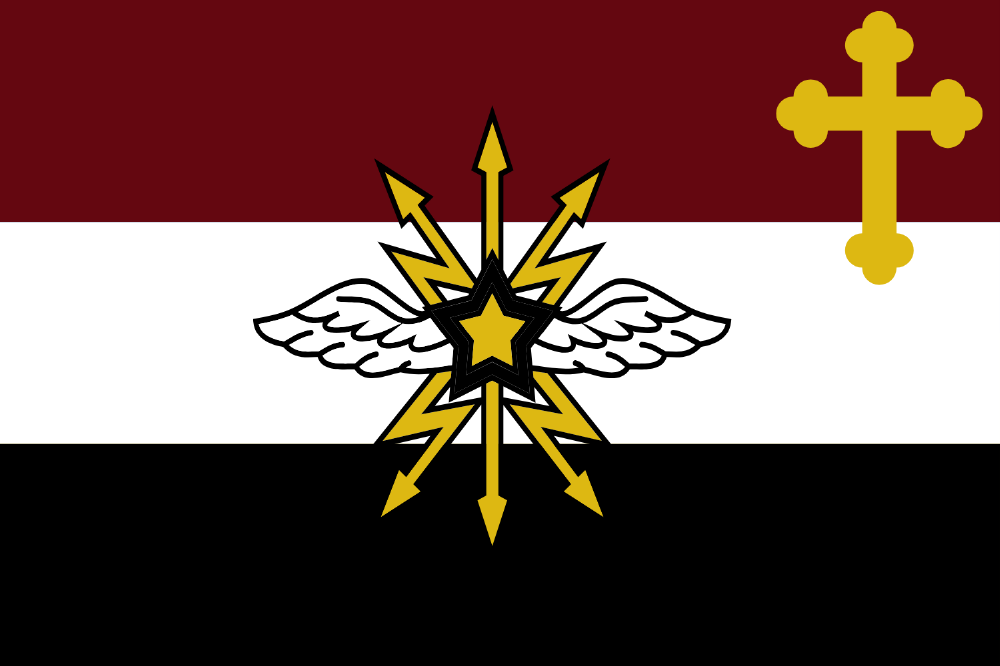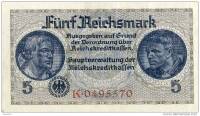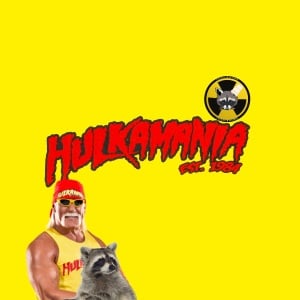(pronounced 'VEE-ta-land')
Vytaland is a coastal nation known for its expansive flat terrain and strategic access to the Baltic Sea. Stretching across fertile lowlands and dotted with rivers and lakes, Vytaland boasts a thriving agricultural sector, particularly in grain and vegetable production. Its mild, temperate climate supports year-round farming and contributes to a stable rural economy.
The coastline is a hub of maritime activity, with bustling ports that facilitate international trade and a vibrant fishing industry. Vytaland’s capital, Konigsberg, sits southwest of the Nemen river and serves as the cultural and economic heart of the country, blending modern infrastructure with historic architecture.
Politically, Vytaland is a constitutional monarchy with a strong emphasis on environmental stewardship and regional cooperation. Its flat landscape makes transportation efficient, with high-speed rail and roadways connecting urban and rural areas seamlessly. The nation is also investing in wind and solar energy, leveraging its open terrain for sustainable development.
Culturally, Vytaland is diverse, with a rich tradition of folk music, literature, and seasonal festivals that reflect its coastal and agrarian roots. Healthcare and primary and secondary education are publicly funded and highly rated, contributing to a high quality of life. Vytaland continues to play a key role in regional diplomacy and environmental initiatives, positioning itself as a peaceful country.
| National Factbook |
| Flag: |

|
| Nation Name: |
Vytaland |
| Leader Name: |
Johannes Beilschmidt |
| Currency: |

Vyta Mark |
| National Animal: |

Swan |
| History: |
The History of Vytaland: From Imperial Frontier to Independent "White Homeland"
Vytaland, a modern nation situated on flat coastal plains bordering the Baltic Sea, has a history deeply shaped by foreign domination, geopolitical conflict, and a contentious rise to sovereignty. Emerging from the shadows of imperialism and regional strife, Vytaland’s path to independence is rooted in the collapse of neighboring powers and a volatile mixture of nationalism, ethnic identity, and strategic determination.
Imperial Rule and Early Identity
For much of the 18th and 19th centuries, the territory now known as Vytaland was an agrarian periphery of the Russian Empire. Its flat terrain and navigable rivers made it an attractive breadbasket for Russian expansionism. Vytaland's population, predominantly rural and ethnically distinct from the Slavic Russians, retained a unique dialect, folklore, and cultural customs. While the imperial government invested little in local development, it imposed heavy administrative control, fostering simmering resentment among the Vyta people.
Following the Russian Revolution in 1917, Vytaland briefly tasted autonomy during the chaos of the Russian Civil War. However, this independence was short-lived. By 1922, the Red Army had reasserted control, incorporating Vytaland into the Soviet Union as part of the Kaliningrad administrative region. Over the next several decades, Soviet policies of collectivization, forced Russification, and demographic manipulation—particularly the settlement of Russian populations—undermined Vytaland's cultural integrity.
The Road to Independence
The dissolution of the Soviet Union in 1991 opened the first serious opportunity for change. Though Russia retained Kaliningrad as an exclave, Vytaland, geographically and culturally distinct from the urban Russian centers, became a flashpoint for nationalist agitation. By the early 2000s, the Vytaland Movement for National Self-Determination had emerged, uniting former dissidents, cultural leaders, and elements of the local militia. Tensions escalated throughout the 2010s, especially as Moscow deployed more troops to secure Kaliningrad against NATO expansion.
The turning point came during the Kaliningrad Civil War, sparked in 2021 by a failed Russian military coup in the region. Vytaland's insurgents, with covert support from neighboring Western-aligned nations, launched a coordinated blockade of key land and sea routes into Kaliningrad, isolating the Russian military garrisons and cutting off critical supply lines. Over the next two years, the insurgency morphed into a full-scale war for independence, with Vytalandian forces seizing control of the countryside and coastal ports. By 2024, amid mounting international pressure and economic strain, Moscow withdrew its forces. Vytaland declared its independence shortly thereafter.
Building a National Identity: The "White Homeland"
In the wake of independence, Vytaland rebranded itself as the "White Homeland"—a term drawn from both its historical reputation for snowy plains and a more controversial ethnonationalist vision promoted by segments of its leadership. While the official state narrative emphasizes cultural preservation and ethnic cohesion, critics—both domestic and abroad—have raised concerns about exclusionary policies targeting minorities and migrants, as well as the rehabilitation of nationalist historical figures.
Despite these tensions, Vytaland has rapidly modernized. It joined regional economic alliances, developed green energy infrastructure, and positioned itself as a guardian of "traditional European values." Its capital, Konigsberg, has become a symbol of its ambitions: modern, efficient, and visibly proud of its independence. The government continues to walk a tightrope between honoring its liberation struggle and navigating the challenges of ethnic identity, democratic norms, and international diplomacy.
Legacy and Future
Today, Vytaland remains a symbol of post-imperial resilience and contested nationhood. Its story is both a testament to the power of self-determination and a cautionary tale about the complexities of nationalism in the modern age. While its future remains uncertain, Vytaland's journey from imperial borderland to independent state continues to shape its identity—and its role on the regional and global stage. |
| Geography |
| Continent: |
Europe |
| Land Area: |
15,771.53 sq. km |
| Terrain: |
Vytaland features predominantly flat terrain characterized by low-lying plains, gentle hills, and a dense network of rivers and wetlands. The region’s landscape was shaped by glacial activity, leaving behind sandy soils, numerous lakes, and peat bogs, especially in the interior. Fertile agricultural land covers much of the southern and central areas, supporting crops like rye, potatoes, and barley.
To the north and west, Vytaland borders the Baltic Sea, offering a stretch of coastline marked by sandy beaches, coastal dunes, and lagoons such as the Vistula and Curonian. These coastal features serve both as natural barriers and economic lifelines, fostering fishing, shipping, and port industries.
Forests, primarily mixed and coniferous, blanket portions of the land, particularly in the east, where small hills rise gently from the plains. Though there are no mountains, the region’s varied ecology includes protected areas and nature reserves rich in birdlife and other fauna. The terrain makes for easy infrastructure development and has historically been strategic for both trade and military positioning. |
| Highest Peak: |
Gora Dozor,
230 meters
|
| Lowest Valley: |
Neman River Valley,
0 meters
|
| Climate: |
Vytaland, situated along the Baltic Sea, experiences a temperate maritime climate with strong continental influences. The region is known for its mild summers, cool winters, and relatively high humidity throughout the year due to its proximity to the sea.
Summers in Vytaland are generally moderate, with average daytime temperatures ranging from 18°C to 24°C (64°F to 75°F). Sea breezes temper the heat, while long daylight hours support agriculture and tourism along the coast. Rainfall is steady but not excessive, often in the form of light showers or overcast skies.
Winters are cold, though not extreme by regional standards. Temperatures typically range from -5°C to 2°C (23°F to 36°F), with occasional snowfall. The flat terrain allows cold air masses from the east to settle, occasionally bringing sharp frosts or icy conditions, especially inland. Coastal areas remain somewhat milder due to maritime influence.
Spring and autumn are transitional and often unpredictable, with quick changes in temperature and frequent rain. Fog is common in coastal zones, especially during the cooler months. Overall, Vytaland’s climate is suitable for year-round habitation and supports a mix of forest, farmland, and wetland ecosystems. |
| People & Society |
| Population: |
997,767 people |
| Demonym: |
Vyta |
| Demonym Plural: |
Vytas |
| Ethnic Groups: |
Slavic - 66.0%
Germanic - 28.0%
Nordic - 6.0% |
| Languages: |
Russian - 52.2%
German - 30.6%
English - 15.2% |
| Religions: |
Orthodox Church of Vytaland (EO) - 78.0%
Lutheran - 16.0%
Non-demoninational - 6.0% |
| Health |
| Life Expectancy: |
73 years |
| Obesity: |
8.2% |
| Alcohol Users: |
32.5% |
| Tobacco Users: |
16.8% |
| Cannabis Users: |
10.8% |
| Hard Drug Users: |
0.8% |
| Economy |
| Description: |
Vytaland’s economy is shaped by its post-Russian transition, coastal geography, and strategic position between Western and Eastern Europe. Since gaining independence, the country has undergone rapid economic restructuring—moving from a heavily centralized, state-controlled system to a diversified, export-oriented market economy. Though the transition was initially marked by instability, foreign investment and government-led modernization efforts have helped Vytaland establish a stable and growing economic base.
Key Sectors
1. Maritime Trade and Logistics:
Vytaland's coastline along the Baltic Sea is its most valuable economic asset. The port city of Port Vyana has become a major logistics hub, handling regional container traffic and bulk exports. Former Russian naval and commercial port infrastructure has been repurposed for civilian use, making shipping, ship repair, and logistics key drivers of GDP.
2. Agriculture and Food Processing:
The flat, fertile plains that define Vytaland’s interior support a robust agricultural sector. The country is a major producer of grains, potatoes, dairy, and rapeseed oil. Since independence, land reforms have privatized former collective farms, and agritech investment has improved yields. Food processing—particularly for export to EU markets—has become an expanding industry.
3. Renewable Energy and Green Technology:
To reduce dependence on Russian fossil fuels, Vytaland has prioritized renewable energy. Wind farms dot the open plains, while solar projects are concentrated inland. Foreign partnerships, particularly with Scandinavian and German firms, have helped position Vytaland as a regional leader in clean energy innovation and exports.
4. Manufacturing and Light Industry:
The government has encouraged the growth of light manufacturing, especially in electronics, automotive parts, and consumer goods. Industrial parks near major transport routes have attracted companies seeking lower-cost labor within the EU-adjacent region.
5. Tourism and Cultural Economy:
Capitalizing on its natural coastline and historic architecture, Vytaland has begun cultivating a tourism industry focused on eco-tourism, coastal retreats, and war history tourism tied to its Soviet and independence-era past. Seasonal festivals and "White Homeland" heritage sites attract diaspora and nationalist visitors.
Economic Challenges and Opportunities
Vytaland faces significant challenges, including a reliance on foreign aid and investment, a shrinking rural population, and tensions over trade alignment with Western vs. post-Soviet markets. Nevertheless, its geographic position, educated workforce, and strategic ports give it strong long-term potential. Efforts to join regional economic unions and establish free-trade agreements have further boosted investor confidence.
Overall, Vytaland’s economy represents a model of post-Russian transformation: outward-facing, resourceful, and still finding a balance between national identity and global integration. |
| Average Yearly Income: |
$60.42 |
| Gross Domestic Product (GDP): |
$1,829,202,317.00 |
| GDP per Capita: |
$1,833.29 |
| Gross National Income (GNI): |
$1,244,828,485.00 |
| Industries: |
Vytaland has a strong agrarian foundation. Its flat terrain and fertile soils make it well-suited for agriculture, and since gaining independence, the country has leaned heavily on farming to stabilize and grow its economy.
Key features of its agrarian sector include:
Grain production: Wheat, rye, and barley are staples, especially in the inland plains.
Root vegetables: Potatoes and beets are widely grown, both for domestic use and export.
Dairy and livestock: Small to medium-scale farms raise cattle and pigs, supported by a growing dairy processing industry.
Oilseeds: Rapeseed (canola) and sunflower cultivation has grown rapidly, in part due to demand for biofuels.
Agri-processing: Vytaland has invested in food processing and packaging facilities, turning raw farm output into higher-value exports.
The government has encouraged modernization through subsidies, land privatization, and partnerships with European agri-tech firms. The agrarian identity also plays a cultural role, reinforcing national narratives of self-sufficiency and rootedness in the land. |
| Military |
| History: |
Vytaland’s military history is rooted in its struggle for independence, with its origins tracing back to partisan militias and defected soldiers during the Kaliningrad Civil War. Before independence, Vytaland had no formal army of its own—only scattered self-defense groups formed in rural areas and sympathetic elements within Russian garrisons who defected as tensions escalated.
Formation and Early Struggle
As civil unrest in the Kaliningrad region deepened in the early 2020s, Vytaland's resistance coalesced into the Vytaland Defense Front (VDF)—a loosely coordinated force of local fighters, dissident officers, and volunteers. The VDF initially relied on guerrilla tactics: ambushes, sabotage, and supply line disruption. Arms were obtained through black-market networks and sympathetic foreign backers, particularly from Eastern European countries wary of renewed Russian expansionism.
The Blockade of Victory Square
One of the defining moments of the Kaliningrad Civil War was the Blockade of Victory Square, a 34-day standoff in the heart of what is now Konigsberg. Russian-aligned forces had entrenched themselves around key administrative and military installations. Vytalandian fighters, using improvised barricades, drones, and urban warfare tactics, encircled the area, cutting off supplies, communications, and reinforcements. The blockade became a symbol of national resistance and was widely broadcast in international media. After prolonged negotiations and skirmishes, the Russian-aligned forces surrendered, marking a turning point in the war.
Post-Independence Military Development
Following independence, the VDF transitioned into the Vytaland National Armed Forces (VNAF). The military adopted a doctrine focused on territorial defense, asymmetric warfare, and hybrid capabilities—including cyber defense and drone units. Former militia leaders were integrated into formal command structures, and military service became a respected path to citizenship and status.
Today, the VNAF is small but professional, with strong ties to regional allies and a focus on maintaining sovereignty, border security, and rapid-response capabilities—lessons hard-earned from the days of siege and insurgency. |
| Soldiers: |
74,687 |
| Tanks: |
6,235 |
| Aircraft: |
375 |
| Ships: |
75 |
| Missiles: |
0 |
| Nuclear Weapons: |
0 |
| Last Updated: 05/11/2025 06:29 pm |



















